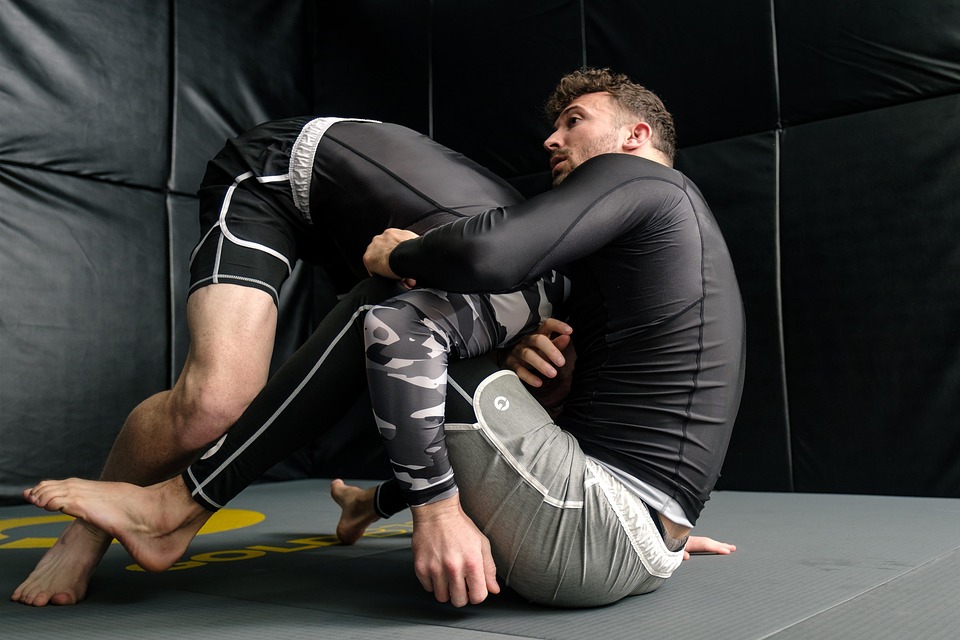Mixed Martial Arts (MMA) is a diverse and dynamic sport that brings together various combat disciplines. At its core, MMA is characterized by two primary styles of fighting: striking and grappling. Understanding the differences between these approaches, their unique techniques, and their strategic importance is essential for fans, fighters, and trainers alike.
Striking: The Art of Stand-Up Fighting
Striking encompasses a range of techniques aimed at delivering powerful and accurate blows from a standing position. This includes disciplines such as boxing, Muay Thai, kickboxing, and traditional martial arts. Strikers emphasize footwork, timing, and distance to execute punches, kicks, elbows, and knee strikes effectively.
Key Elements of Striking
-
Footwork and Movement: Strikers need to be agile and light on their feet. Proper movement helps create angles for attack while allowing quick evasive responses to incoming strikes.
-
Distance Management: Effective striking relies on understanding range. Fighters must know when to close the distance to attack and when to maintain space to avoid being hit.
-
Power and Precision: Developing knockout power is essential for many strikers. Techniques like hip rotation and body mechanics allow fighters to deliver strikes with maximum force.
- Defensive Techniques: Strikers employ various defenses, including head movement, blocking, and footwork to evade incoming attacks while setting up their own counters.
Famous Strikers in MMA
Notable MMA fighters known for their striking prowess include Conor McGregor, known for his precision and knockout power, and Israel Adesanya, who combines a unique style with exceptional movement and timing.
Grappling: The Ground Game
Grappling focuses on clinching and subduing an opponent, aiming to control, submit, or pin them on the ground. This style draws from wrestling, Brazilian Jiu-Jitsu (BJJ), judo, and sambo. Grapplers seek to neutralize their opponent’s striking by taking the fight to the ground, where they can dictate the pace and position.
Key Elements of Grappling
-
Takedowns and Throws: Grapplers aim to take their opponents to the mat using techniques such as single-leg and double-leg takedowns or throws from judo.
-
Control and Positioning: Once on the ground, grapplers utilize positioning to control their opponents, often aiming for dominant positions like side control, mount, or back control.
-
Submissions: Grapplers apply joint locks and chokeholds to force their opponents to submit. Mastery of submissions allows a fighter to capitalize on mistakes made by their opponents.
- Ground and Pound: In addition to submitting opponents, grapplers often use strikes to inflict damage while maintaining control on the ground, turning the fight in their favor.
Famous Grapplers in MMA
Fighters like Khabib Nurmagomedov, renowned for his wrestling and control, and Demian Maia, known for his submission skills, have made significant impacts in the octagon through their grappling strategies.
The Balance Between Striking and Grappling
While striking and grappling represent two distinct styles in MMA, successful fighters often find a way to integrate both into their game. The ability to transition between striking and grappling, adapting to the opponent’s strengths and weaknesses, is crucial in modern MMA.
Strategies for Success
-
Adaptability: Fighters must be adaptable, shifting strategies based on their opponent’s style. A dominant striker may look to keep the fight standing, while a grappler may seek to close the distance to take the fight to the ground.
-
Cross-Training: Many fighters train in both striking and grappling disciplines to become well-rounded athletes. The cross-training approach allows them to develop a more versatile skill set.
-
Fight IQ: Understanding when to strike, grapple, or defend is crucial. A fighter’s ability to read situations and adjust their strategy can make the difference between victory and defeat.
- Conditioning: Both striking and grappling demand high levels of cardio and overall fitness. Staying in peak physical condition is essential for executing techniques effectively across extended rounds.
Conclusion
Striking and grappling are foundational elements of MMA, each bringing unique characteristics and strategies to the sport. Understanding the nuances of both styles can enhance appreciation for the athletes competing at the highest level. As the sport evolves, the fusion of striking and grappling continues to shape the landscape of MMA, pushing fighters to innovate and refine their techniques for success in the octagon. Whether a fan of the knockout or the submission, the thrilling blend of these two styles makes MMA a captivating spectacle for all.



